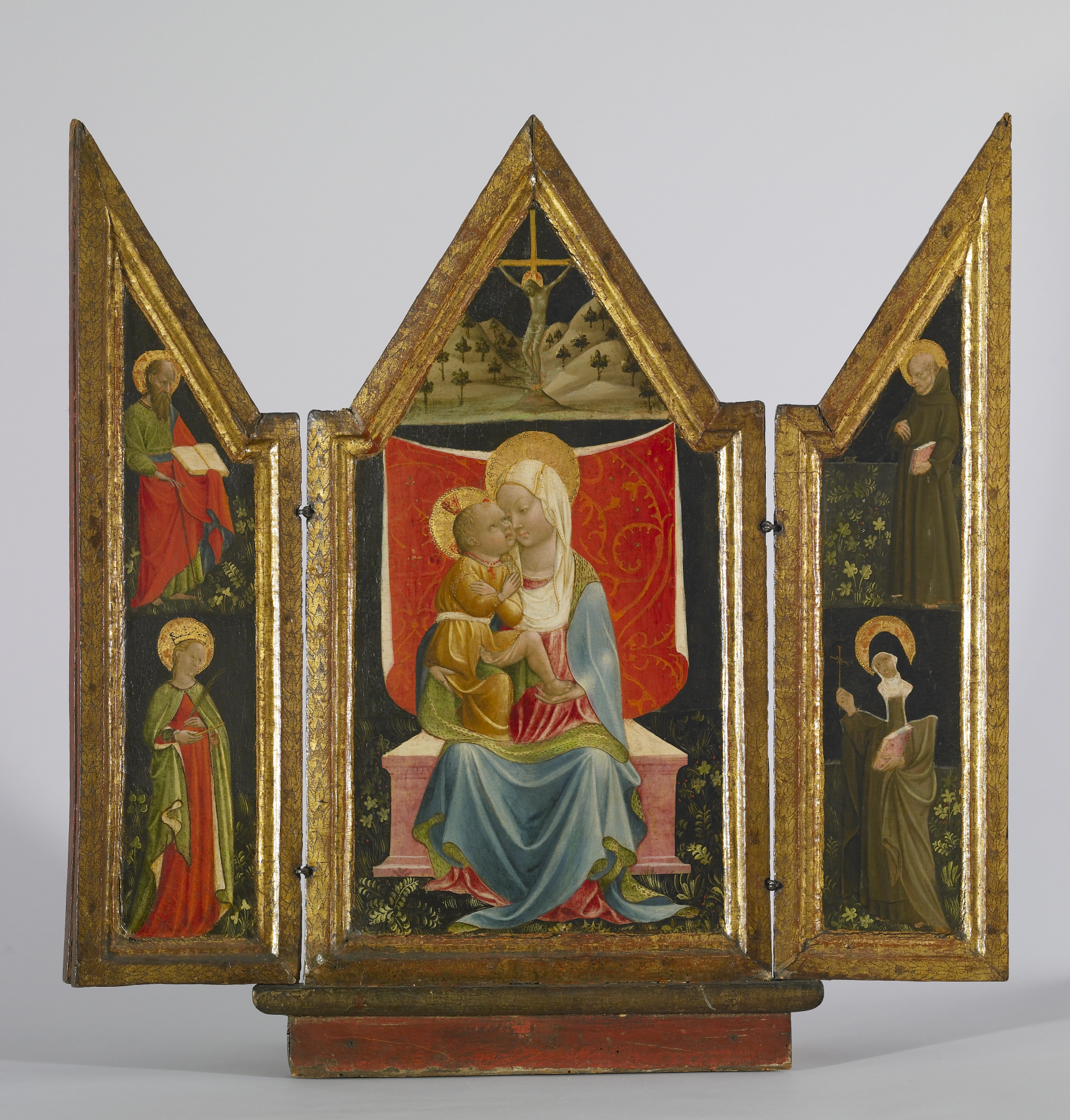Madonna and Child Enthroned with Saints
(Renaissance Europe )
Small triptychs (paintings composed of three panels) were common devotional objects in Italian Renaissance homes. Their side panels were often hinged so that they could be folded over the central image like a pair of shutters, making the triptych easily portable. In this example the Madonna is seated upon a low throne before a cloth of honor with the Christ Child in her arms. Wearing a coral necklace (a popular talisman against evil), the Child affectionately presses his cheek against his mother’s. An image of the crucified Christ appears above as an omnipresent reminder of Christ’s death and resurrection. Four attendant saints, probably selected by the individual who commissioned the work, appear in the side panels: at the left are Saints Paul (above), with the sword with which he was beheaded, and Dorothy (below), holding a tiny basket of flowers; at the right are Saints Francis of Assisi (above), with his hands and feet marked with the “stigmata,” or wounds of Christ, and Clare (below), one of Francis’ followers.
Andrea Delitio worked extensively in his native region of Abruzzo in lower central Italy for much of the 15th century. This triptych, probably executed in the mid-1440s, is one of his early works and is painted in an elegant and linear yet subtly sculptural style that reflects the close study of the art of contemporary Florence, especially the paintings of Masolino (1383-1447) and Fra Angelico (ca. 1395-1455). Another painting by Delitio from the same period is the pinnacle of the "Virgin Annunciate" at the Metropolitan Museum of Art, New York (inv. 1975.1.29).
Provenance
Provenance (from the French provenir, 'to come from/forth') is the chronology of the ownership, custody, or location of a historical object. Learn more about provenance at the Walters.
Don Marcello Massarenti Collection, Rome [date and mode of acquisition unknown] [1897 catalogue: no. 41, as school of Fra Angelico]; Henry Walters, Baltimore, 1902, by purchase; Walters Art Museum, 1931, by bequest.
Exhibitions
| 1962 | The International Style: The Arts in Europe Around 1400. The Walters Art Gallery, Baltimore. |
Geographies
Italy, Abruzzi (Place of Origin)
Measurements
H with frame: 31 1/8 x W: 30 5/16 x D: 11/16 in. (79 x 77 x 1.8 cm); Center panel painted surface H: 23 5/8 x W: 11 7/8 in. (60 x 30.2 cm); Left wing painted surface H: 20 7/8 x W: 4 7/16 in. (53 x 11.2 cm); Right wing painted surface H: 20 7/8 x W: 4 7/16 in. (53 x 11.2 cm)
Credit Line
Acquired by Henry Walters with the Massarenti Collection, 1902
Location in Museum
Not on view
Accession Number
In libraries, galleries, museums, and archives, an accession number is a unique identifier assigned to each object in the collection.
In libraries, galleries, museums, and archives, an accession number is a unique identifier assigned to each object in the collection.
37.715


